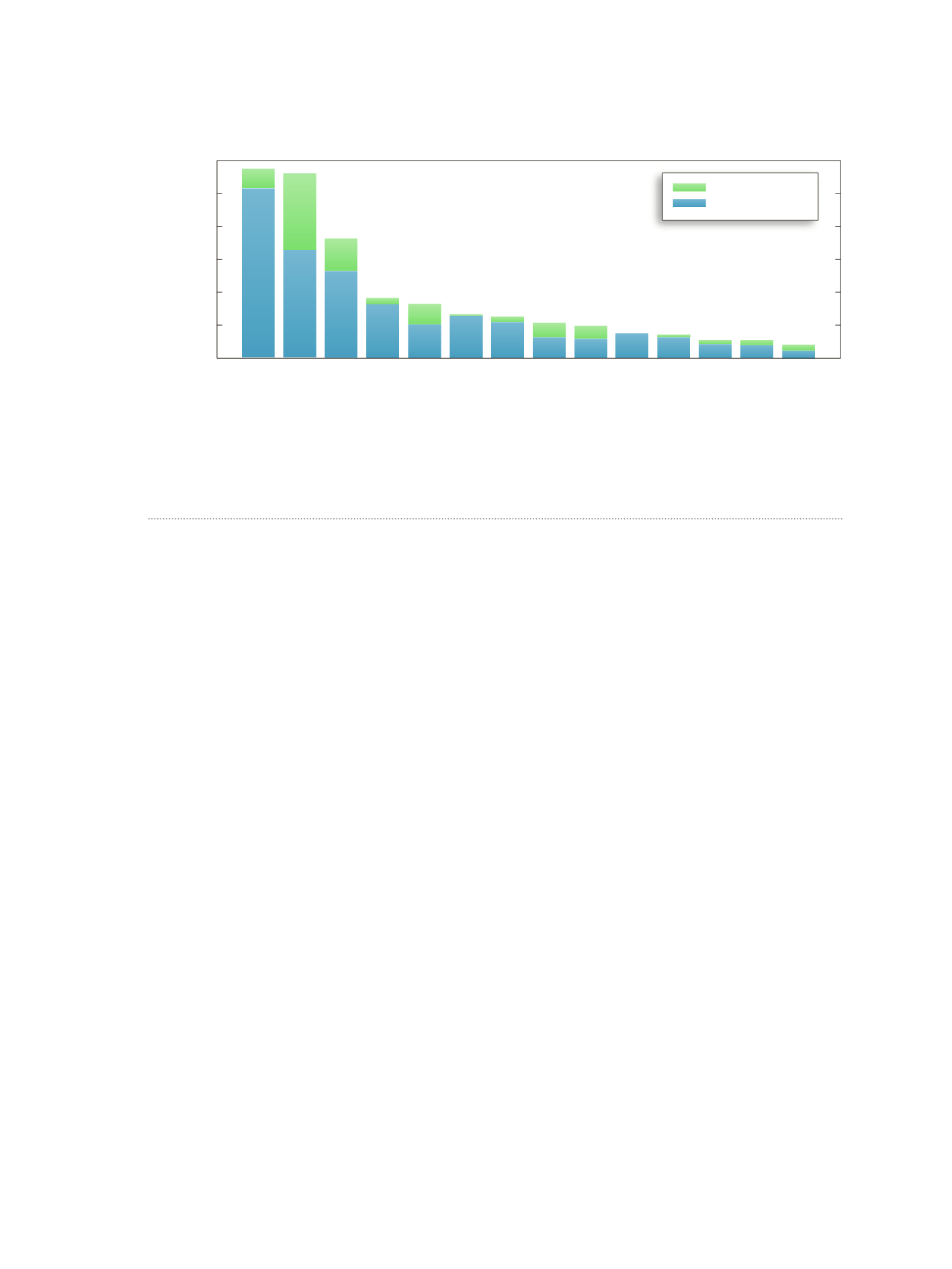

SEQUENZIAMENTO E ANNOTAZIONE DEI GENOMI
Paragrafo 4.2
[
89
]
ǡ ǣ
° ǡ
Ǥ
°
Ǥ
ȋǣȀȀǤȌ ǡ ǡ Ǧ
°
R. norvegicus
ȋ
Figura 4.6
ȌǤ ° ǯ
°
ǡ Dzdz Ǥ °
ȋ
http://www.geneontology.org/teaching_resources/tuto-rials/2003_MBL_jblake.pdf
ȌǤ
ǡ ǯ
genomica comparata
Ǥ Ǧ
ǡ
ǡ Ǧ
Ǥ Ǧ
ǯ
ǯǤ ǡ
omologhi
Ǥ
ortologhi
ǡ
Ȁ ǯ
paraloghi
ȋ
Figura 4.7
ȌǤ
ǯǤ
ǯ ȋ ȌǤ
° î ǡ Ǧ
ǯ î
Ǥ ǡ °
ǯ ° ǯǤ
sintenia
ǡ
° ǯ ǡ Ǧ
Ǥ Ǧ
Ö
Ǥ ǯ °
ǡ Ǧ
ǡ ǡ Ǧ
Ǥ
Annot
azioni per specie
Annotazioni (non sperimentale e sperimentale)
600.000
500.000
400.000
300.000
200.000
100.000
0
Sperimentale
Non sperimentale
R. norvegicus
H. sapiens
M. musculus
D. rerio
A. thaliana
G. gallus
C. elegans
D. melanogaster
D. discoideum
E. coli
S. pombe
S. cerevisiae
A. crizae
A. crizae
FIGURA 4.6
S
L’annotazione dei genomi si arricchisce di nuove informazioni continuamente. Questo era il numero di
annotazioni GO, verificate sperimentalmente (verde) o solo bioinformaticamente (blu) a Gennaio 2016. Le info aggiorna-
te possono essere ottenute visitando il sito
http://geneontology.org/page/current-go-statistics.R. norvegicus
,
H. sapiens
e
M. musculus
sono i genomi con maggiori annotazioni.
















